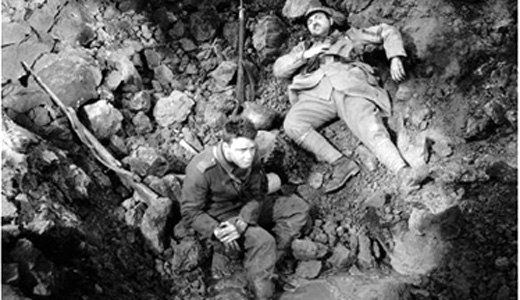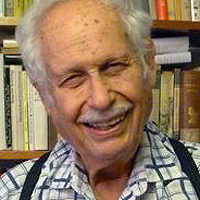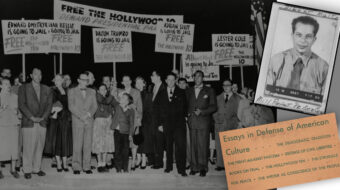
BERLIN – On December 5. one or two hundred people left a movie theater in Berlin, mostly silent and deeply moved though the film they had seen was first released in 1930. This American-made epic had lost none of its extremely emotional appeal. It was “All Quiet on the Western Front” and the date of its showing here was no coincidence.
Exactly eighty years earlier, to the day, Joseph Goebbels, later to become Hitler’s notorious propaganda minister, had led 200 Nazis in violently preventing the showing of this same film. At the shout of Goebbels, who was in the balcony, the Nazis, storm troopers without their brown uniforms and some of the many newly-elected deputies to the Reichstag, blew whistles, attacked the rest of the audience and then let hundreds of white mice out of cardboard boxes to scurry through the rows. The police tried to restore order, at least some of them did, but this proved impossible and the showing was stopped. Then five or ten thousand Nazis waiting outside joined Goebbels in a march and rally in the downtown area.
The tumults continued for a whole week, after which the Censorship Office, made up of Nazi sympathizers or men fearing the growing Nazi pressure, bowed to the demands of several pro-Nazi states to have the film banned altogether in Germany. This was a first major success of the Nazis and was accompanied by an obscene barrage of propaganda against this “defamation of our boys in uniform” by the “Jews in Hollywood” and in Berlin’s “elite” West Side.
A half-year later, after protests by prominent writers, artists and anti-Nazi political figures, permission was reluctantly granted to show the film to small private audiences, but only in such a radically cut version that much of the political punch was gone. This strange law, a compromise applying to a single film, was soon canceled, yet the attempted conciliation of the important German market for American films resulted in only cut-film versions being distributed to all other countries as well.
The film was totally forbidden in many countries, including France, Austria and Australia, and was eviscerated even in the USA, despite its two Oscars: as best film and, for Lewis Milestone, best director. A final wish of Milestone was to have the film restored to its original length and principles. It took two decades after his death in 1980 before this was finally achieved.
The film shown last Friday was the original, uncut version with German sub-titles, based on a novel by Erich Maria Remarque. Before showing began, two historians described what had happened in 1930, which had made this a major step in the Nazi take-over of German culture and, two years later, of the whole country, resulting in the destruction of both.
One historian told the tragic story of Hanns Brodnitz, the manager of the Mozart-Saal, which he had turned into a leading art film center, highlighting such film greats as the young Rene Clair (“Under the Roofs of Paris”) and Charlie Chaplin’s masterpieces. But after the Nazi attacks on his theater and the exploding level of anti-Semitism in Germany he lost his job and, before long, all jobs.
Brodnitz’ attempts to escape to the USA were in vain and in 1938 he went into hiding. Only after five years, when he dared to leave his last hiding-place, was he caught and sent to Auschwitz, where he was murdered in a gas chamber a few days later. His autobiographical book on film culture during Germany’s Weimar Period (after 1919) was not released in 1933 because of the Nazi takeover and was soon destroyed, but a surprising find of the galley proofs a few years ago made a new edition possible.
Two major thoughts certainly went through the minds of many in the audience last Friday. One was a swift understanding of why not only Nazis and not only German super-patriots hated the film and its terrifying portrayal of the horrors of war, with occasional questioning by the soldiers as to why and to whose benefit they are suffering, shooting and dying.
In one unforgettable scene the hero, played by Lew Ayres, bitterly regrets killing a French soldier lying next to him. The glories of “fighting and dying for one’s country”, so mercilessly satirized and exposed by the film, went against all the efforts by nearly every government in those years to honor the dead in such a way that the next generation would dutifully follow in their fatal footsteps.
The other thought surely going through the heads of so many in the audience was not unrelated: They are at it again! Not only the heavy-booted pro-Nazi groups marching through one city after another in Germany, for they are still a small minority and face unrelenting resistance by anti-fascists. But even more menacingly, troops are again being sent to fight in Afghanistan and elsewhere, and when the metal coffins are flown home they are met with rites and speeches hardly differing from those in attacked in the film.
This month Germany’s Minister of Defense, while ending the draft, is creating a tough professional army with the latest murderous equipment, ready to defend “Germany’s trade routes and access to needed raw materials” anywhere in the world. His semi-prediction of future conflicts was accompanied by his usual slight and so frightening smile. Words like Iran, Palestine, Yemen and Korea inevitably crossed people’s minds.
Eighty years had passed, and what terrible years some of them were, yet so many have learned so little. Aside from the greatness of the film, it was thoughts like these which made this event so meaningful and so disturbing.
Photo: Père Ubu cc 2.0












Comments